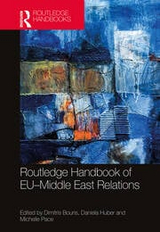
Assessing EU - Middle East trade relations: patterns, policies and imbalances
Aboushady, Nora / Chahir ZakiExterne Publikationen (2021)
in: Dimitris Bouris / Daniela Huber / Michelle Pace (eds.), Routledge Handbook of EU-Middle East Relations, Abingdon: Routledge,
ISBN: 9780367330767
DOI: https://doi.org/10.4324/9780429317873-45
Information
After more than two decades of regional integration, our chapter evaluates the European Union (EU)-Middle East trade relations through three main angles. First, we examine trade patterns (at both the country and the sectoral levels) to verify if integration led to exports diversification beyond these countries’ traditional exports. Second, we examine if the Euro-Mediterranean Partnership contributed to deepening integration or if it remains shallow. Third, we analyse the socio-economic outcome of the agreement. Our analysis of trade patterns suggests that Arab countries’ exports remain concentrated in traditional sectors of specialisation with limited value added. Moreover, integration remains shallow, since the expected outcome of tariff dismantlement was offset by the rise in non-tariff barriers. Finally, social and economic imbalances between the Northern and Southern shores of the Mediterranean are on the rise, especially those related to jobless exports growth and female employment.

